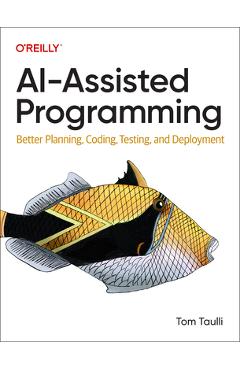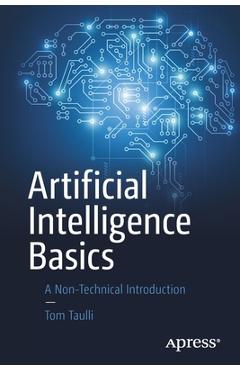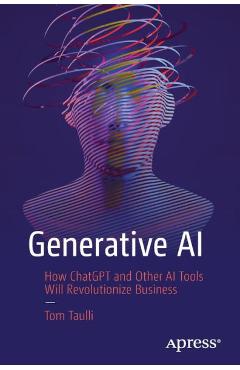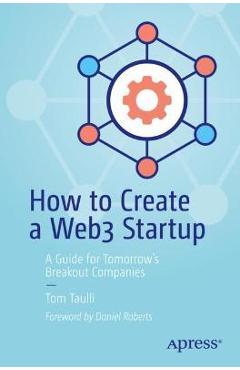Ai-Assisted Programming: Better Planning, Coding, Testing, and Deployment - Tom Taulli

Detalii Ai-Assisted Programming: Better Planning, Coding,
libris.ro
390.55 Lei
433.94 Lei
Computers
Tom Taulli
Ai-Assisted Programming: Better Planning, Coding, - Disponibil la libris.ro
Pe YEO găsești Ai-Assisted Programming: Better Planning, Coding, de la Tom Taulli, în categoria Computers.
Indiferent de nevoile tale, Ai-Assisted Programming: Better Planning, Coding, Testing, and Deployment - Tom Taulli din categoria Computers îți poate aduce un echilibru perfect între calitate și preț, cu avantaje practice și moderne.
Preț: 390.55 Lei
Caracteristicile produsului Ai-Assisted Programming: Better Planning, Coding,
- Brand: Tom Taulli
- Categoria: Computers
- Magazin: libris.ro
- Ultima actualizare: 28-10-2025 01:22:05
Comandă Ai-Assisted Programming: Better Planning, Coding, Online, Simplu și Rapid
Prin intermediul platformei YEO, poți comanda Ai-Assisted Programming: Better Planning, Coding, de la libris.ro rapid și în siguranță. Bucură-te de o experiență de cumpărături online optimizată și descoperă cele mai bune oferte actualizate constant.
Descriere magazin:
Get practical advice on how to leverage AI development tools for all stages of code creation, including requirements, planning, and design; coding; and debugging, testing, and documentation. With this practical book, beginners and experienced developers alike will learn how to use a wide range of tools, from general-purpose LLMs (ChatGPT, Bard, and Claude) to code-specific systems (GitHub Copilot, Tabnine, Cursor, and Amazon CodeWhisperer). You\'ll also learn about more specialized generative AI tools for tasks such as text-to-image creation. Author Tom Taulli provides a methodology for modular programming that aligns effectively with the way prompts create AI-generated code. This guide also describes the best ways of using general purpose LLMs to learn a programming language, explain code, or convert code from one language to another. This book examines: The core capabilities of AI-based development tools Pros, cons, and use cases of popular systems such as GitHub Copilot and Amazon CodeWhisperer Ways to use ChatGPT, Bard, Claude, and other generic LLMs for coding Using AI development tools for the software development lifecycle, including requirements, planning, coding, debugging, and testing Prompt engineering for development Using AI-assisted programming for tedious tasks like creating regular expressions making chron jobs and GitHub Actions How to use AI-based low-code and no-code tools

Produse asemănătoare

Ai-Assisted Programming: Better Planning, Coding, Testing, and Deployment - Tom Taulli
![]() libris.ro
libris.ro
Actualizat in 28/10/2025
390.55 Lei

AI-Assisted Programming. Better Planning, Coding, Testing, and Deployment, Paperback/Tom Taulli
![]() elefant.ro
elefant.ro
Actualizat in 20/10/2025
403.99 Lei
Produse marca Tom Taulli

Artificial Intelligence Basics: A Non-Technical Introduction - Tom Taulli
![]() libris.ro
libris.ro
Actualizat in 28/10/2025
293.69 Lei

Ai-Assisted Programming: Better Planning, Coding, Testing, and Deployment - Tom Taulli
![]() libris.ro
libris.ro
Actualizat in 28/10/2025
390.55 Lei

Azure AI Fundamentals (Ai-900) Study Guide: In-Depth Exam Prep and Practice - Tom Taulli
![]() libris.ro
libris.ro
Actualizat in 28/10/2025
334.75 Lei

Building Generative AI Agents: Using Langgraph, Autogen, and Crewai - Tom Taulli
![]() libris.ro
libris.ro
Actualizat in 28/10/2025
306.85 Lei

Generative AI: How Chatgpt and Other AI Tools Will Revolutionize Business - Tom Taulli
![]() libris.ro
libris.ro
Actualizat in 15/12/2024
326.34 Lei

How to Create a Web3 Startup: A Guide for Tomorrow\'s Breakout Companies - Tom Taulli
![]() libris.ro
libris.ro
Actualizat in 11/04/2024
242.28 Lei